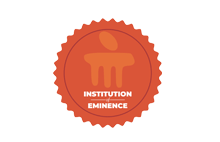Formulation and assessment of biological properties of garcinia indica fruit extract mouthrinse as an adjunct to oral hygiene regimen: an in vitro analysis
Document Type
Article
Publication Title
Journal of Applied Oral Science
Abstract
The prevalence of gingivitis is substantial within the general population, necessitating rigorous oral hygiene maintenance. Objective: This study assessed a Garcinia indica (GI) fruit extract-based mouthrinse, comparing it to a 0.1% turmeric mouthrinse and a 0.2% Chlorhexidine (CHX) mouthrinse. The evaluation encompassed substantivity, staining potential, antimicrobial efficacy and cytocompatibility. Methodology: The study employed 182 tooth sections. For antimicrobial analysis, 64 extracted human teeth coated with a polymicrobial biofilm were divided into four groups, each receiving an experimental mouthrinse or serving as a control group with distilled water. Microbial reduction was assessed through colony forming units (CFU). Substantivity was evaluated on 54 human tooth sections using a UV spectrophotometer, while staining potential was examined on 64 tooth sections. Cytocompatibility was tested using colorimetric assay to determine non-toxic levels of 0.2% GI fruit extract, 0.1% Turmeric, and 0.2% CHX. Results: Data were analysed with one-way ANOVA (α=0.05). Cell viability was highly significant (p<0.001) in the 0.2% GI group (64.1±0.29) compared to 0.1% Turmeric (40.2±0.34) and 0.2% CHX (10.95±1.40). For antimicrobial activity, both 0.2% GI (20.18±4.81) and 0.2% CHX (28.22±5.41) exhibited no significant difference (P>0.05) at end of 12 hours. However, 0.1% Turmeric showed minimal CFU reduction (P<0.001). Substantivity results at 360 minutes indicated statistically significant highermean release rate in 0.1%Turmeric (12.47±5.84) when compared to 0.2% GI (5.02±3.04) and 0.2% CHX (4.13±2.25) (p<0.001). The overall discoloration changes (∆E) were more prominent in the 0.2% CHX group (18.65±8.3) compared to 0.2% GI (7.61±2.4) and 0.1% Turmeric (7.32±4.9) (P<0.001). Conclusion: This study supports 0.2% GI and 0.1% Turmeric mouth rinses as potential natural alternatives to chemical mouth rinses. These findings highlight viability of these natural supplements in oral healthcare.
DOI
10.1590/1678-7757-2023-0291
Publication Date
1-1-2024
Recommended Citation
Macherla, Shravya; Varghese, Jothi; Nayak, Usha Y.; and Velagacherla, Varalakshmi, "Formulation and assessment of biological properties of garcinia indica fruit extract mouthrinse as an adjunct to oral hygiene regimen: an in vitro analysis" (2024). Open Access archive. 10951.
https://impressions.manipal.edu/open-access-archive/10951


